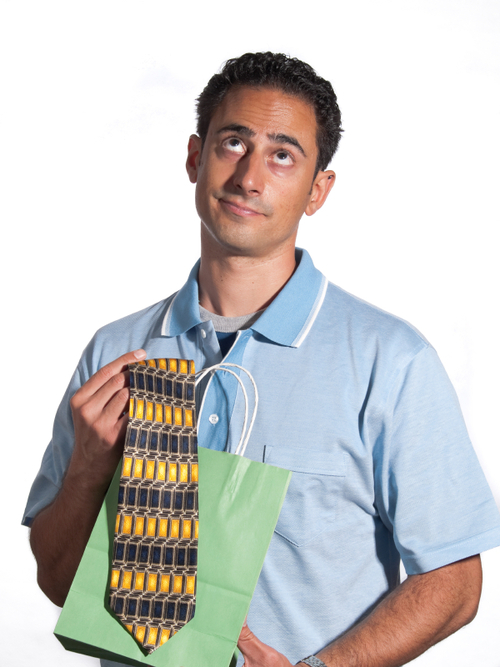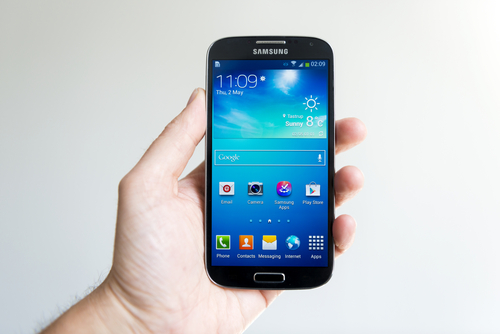High Resolution Over Long Cables – A Challenge For Display Interface Ecosystem
MHL LLC Staff Writer
November 28, 2016
When I grew up, many teenagers were upgrading their car stereos. I watched my brother and his friends install huge power amplifiers and subwoofer boxes in their trunks. That same brother taught me how a coil of copper could be used as a low pass filter, cutting out the higher frequencies from the subwoofer. We did not know how it worked, it just worked. It was not until years later, when in college, that I learned about inductors, RLC crossover networks, and transmission lines. Fast forward to today. The same principle that a cable is a low pass filter is appearing again. This time, as display interfaces need to deliver increasing resolution. Read on to learn more.
.jpg?n=9617)
Today’s Display Interfaces Are Digital, That Helps, Right?
Modern display standards digitize video signals, which changes the way we experience attenuation. One advantage of digitization is that subtle distortions and degradations do not occur. However, attenuation is still present and once the signal has been attenuated sufficiently it will not be received correctly and the interface will stop working. Techniques such as Forward Error Correction (FEC) can help make links more reliable by improving immunity to noise but they cannot remove the impact of attenuation.
Higher Resolutions Increase Attenuation
When digitized display interfaces were first introduced they seemed to solve all of our display connectivity problems. Strange distortions at the edge of the screen, ghosting and color variations all disappeared. And at the resolutions in use at the time, attenuation was only a problem at many tens of feet. However, over the past 15 years display resolutions have increased rapidly. To move all this additional information frequencies have been increased. This takes me back to what I learned in my car audio installation days. Copper cables act as a low pass filter. So as frequency goes up so does attenuation. This reduces the maximum cable length.
Quantifying Impact on Cable Length
There is no one answer as to how far a digital interface can drive. It depends on the standard and the quality of the cable. For example with HDMI 1.0 we see that 30 feet cables are fairly common, while with HDMI 2.0 cable length seems limited to about 20 feet due to the higher frequencies. USB is also interesting to review; it has undergone similar changes in maximum cable length as frequencies have increased:
- USB 2.0 5 meters (480 Mbps)
- USB Type C 2 meters (5 Gbps)
- USB Type C 1 meters (10 Gbps)
Delivering Longer Cable Length
There are three basic techniques that are used to improve video and data losses due to cable length:
- Active Electrical Cables, which amplify the signal at one or more points in the cable.
- Active Optical Cables, which convert the electrical signals to optical for transmission and then back to electrical at the receiver.
- Using more data conductors which results in higher bandwidth without higher frequencies.
As the road to 8K displays is paved over the next few years, and bandwidth continues to increase, the display interface ecosystem will need to consider each of these solutions when determining how to deliver more data over longer cable lengths. Clearly the display interface ecosystem has lots of decisions and tradeoffs before it. One thing is for sure, it will be an exciting few years as we collectively chart a course forward.
Top Ten Reasons Smartphones Make Better Gifts Than Ties
By Masud Syed, Senior Technical Marketing Engineer, MHL, LLC

To all you dads out there, how many of you have opened up a gift only to find a wildly patterned necktie or cologne that smells and sounds so outdoorsy it makes you feel like you have to go outside and chop wood with your shirt off to earn the privilege of wearing it. Let’s be honest, you don’t want another paisley tie…gadgets are what’s on your wish list. After all, with more smartphones and tablets being released that are packed with more processing power, better cameras, and sleeker designs, they make MUCH better gifts. Here’s why…drum roll please…
The Top Ten Awesome Things To Do With Your New Android Smartphone or Tablet
Number 10. No more surprise visits from your mother-in-law. Simply connect your MHL®-enabled device to a TV and she can see her darling grandchildren annnnny time she wants using Skype™ or a similar video chat service.
Number 9. You always beat your friends’ scores when gaming on your mobile device; now show them how it’s done on the big screen. Connect your MHL-enabled Android phone or tablet to your TV and wirelessly pair a controller for the ultimate gaming experience. There’s no lag and the TV charges back your mobile device while you play.
Number 8. Give your kids their own personal tutor. More and more education classes can be found online covering topics such as science, math and English. Instead of driving your kids to a tutoring center access these online programs on your MHL device and view it on a big screen to learn from the comforts of home.
Number 7. The next time your know-it-all friend thinks he/she knows it all, prove them wrong. Let’s say you are listening to the radio and they insist it’s one artist and you know it’s another just plug your Android device with MHL into the nearest TV, launch an app like Shazam® or SoundHound that will instantly identify the song, artist, along with any other metadata available for the track. Show them just how “wrong” they are when the “right” artist pops up on the TV screen. You’ve just earned yourself bragging rights for the rest of the day.
Number 6. Travel on the road –without the extra baggage! It’s hard enough that you’re away from your family when you’re on the road, but when you have to carry a bulky laptop and power cord life is even tougher. Why not just bring your smartphone or tablet, an MHL adapter, a roll-up keyboard and portable mouse, and connect it to a TV screen in your hotel room. Instantly transform any screen into a monitor to work your way!
Number 5. Work on your golf swing. With MHL and a good MacGyvered tripod, you can record your long ball swing while your golf pro explains how to make it better. Watch your progress on each swing in full HD on the nearest TV. FOUR!!!
Number 4. Get a new first base coach. If you happen to coach a little league, or act as assistant coach with all the rest of the parents, you can be the hero and show the umpire it was a BALL AND NOT A STRIKE. If he still doesn’t agree, it’s a good thing you captured the entire play on your MHL phone! After the game, invite all of the parents over for a BBQ to replay that bad call and vent.
Number 3. Show them you can rough it, without really roughing it. Planning a camping trip with your family and not in the mood to repeatedly hear, “I’m bored, when are we going home?” Get a 3M projector, connect it to your MHL device and use your RV’s side wall to project the image. Get some camp chairs and snacks and have movie night in the great outdoors.
Number 2. Capture your kid’s first bike ride, marching band competition, beauty pageant, or soap box derby on your MHL phone. Instead of passing the phone around, share these moments with all of your loved ones on the big screen at the same time. They can enjoy seeing your boy scout win his pinewood derby, or your little star twirling in her ballerina skirt all in glorious HD, courtesy of your magical MHL device.
And the Number 1 reason why a smartphone is better than a tie is that many devices have MHL technology – in fact, there is an installed base of over 260 million products that enable all of these fun activities!
Consumer website: www.meetmhl.com
Business website: www.mhltech.org
iSwitched: How To Migrate Your Data From Your iPhone To Your New Android Samsung Galaxy S4
By Michael Bergen, Senior Partner Alliance Manager, MHL, LLC
May 13, 2013

So, you've decided to join the thousands of iPhone users who (for whatever reason) are switching from an iPhone to an Android smartphone like the new, sleek Samsung Galaxy S® 4. Don't get me wrong, the iPhone has forever changed the smartphone world, but many iPhone users are feeling limited by their lack of connectivity to other devices. They're exasperatingly saying, "It's time to find the right phone that appreciates me, my contacts, photos and data!"
If you've owned your iPhone for a while, you've probably had that sinking feeling in your stomach about what'll happen to your beloved apps, contacts, and data when you switch to an Android phone. Let's admit it, it's scary, but it doesn't have to be with these tips and tricks. Let's start with the music. If you have a ton of songs and want to transfer them to your Samsung phone, a free program called Samsung Kies, which is similar to iTunes, can easily import songs from iTunes. If you have another Android device, there are some limitations, but songs can be converted to MP3, then ripped by the computer and loaded onto the mobile device. There's also a good chance you are using Spotify or Pandora by now, in which case, you may not have any local music files, and you just need to download the Spotify and/or Pandora® app to your Android device.
Migrating your contacts and other data is possible, but it can be a little tricky. The first thing you'll need to do is purchase a third party application like Easy Phone Sync, which was offered free by Samsung on the Galaxy S® 3. There are other apps you can buy like WonderShare, but the free ones work fine. Once you have the app installed on your phones and computer, it's really just a matter of connecting everything via USB and using your computer as "the dump truck" to transfer the data and contacts between phones.
Finally, apps can't be migrated from iOS to an Android but if you have another iOS device like an iPad or iPod, you'll be able to use the same apps on those devices. Just use iTunes and download them to your other iOS device(s). Also, many common apps are available for free download on Android like Facebook, Pandora, Instagram, Angry Birds™ and Subway Surfers to name a few.
If you are still currently using your iPhone, and are still pondering the switch to the latest Android device, let me give you some additional food for thought and sweeten the pot to make the jump a little easier. Most of the latest Android phones come with MHL® technology already inside. MHL gives you the ability to mirror high-definition movies, pictures, or music from your phone to your TV or car infotainment system, using the same connection you would normally use to charge your phone. So what are you waiting for?
MHL – Now That’s Music to My Ears!

By Stacey-Lee Messam, MHL Program Manager
April 4, 2013
Karaoke brings people together – whether it’s a crowded bar or in a private room, and with the smell of smoke and sweet perfume. Once that microphone is in your hands, you feel like a star, even if it’s for a brief moment. It’s a rush where you can be Hunter Hayes, Rihanna and Adam Levine if you just close your eyes and let the music take you. Now whether you actually sound like them is debatable, but it’s all in good fun!
Karaoke has come a long way since its LaserDisc days of the 1980s. Nowadays, your mobile phone is like a technological Swiss Army knife. It’s your set-top box, game console, personal assistant, and babysitter. So why wouldn’t it be your karaoke machine too? Apps like Spotify offer karaoke versions of popular songs that are mostly music with some backup vocals.
MHL technology takes that same streaming technology to the next level. Connect your smartphone to your big screen television or home theater using MHL and all of your smartphone’s content can be displayed. New karaoke apps such as Red Karaoke also show the accompanying lyrics across the big screen as the song plays out of the TV speakers or sound system. If the HDTV is MHL enabled, you can use the TV remote to control your smartphone and navigate the apps. You can also take advantage of the front-facing camera on your phone to capture your fabulous crooning self or record your friends belting out songs to use as blackmail material later (I jest!).
In fact, MHL will actually be at the 48th Annual Academy of Country Music Awards in Las Vegas, April 5-7. Blake Shelton and Luke Bryan are hosting the awards and it will be broadcast live from the MGM Grand Garden Arena. The MHL team will be brushing elbows with celebrities in The Gifting Lounge. This year, we’re doing a karaoke demo, where we’ll be singing all of the latest country songs, and encouraging performers, presenters, and award nominees to belt out some vocals too! Everyone loves a cover song at award ceremonies, right? We will be live tweeting from the event, and that includes pictures, so be sure to follow us @MeetMHL.
So tell us – is MHL music to YOUR ears – and what’s karaoke’s future thanks to this technology? Will bar owners and AV installers add wireless microphones and additional flat panel screens since it’s so low cost? Will more homes transform into private karaoke lounges at night and on the weekends sans red leather couches and disco balls? Whatever the outcome may be, I’m excited about the next time I can be Pink, even if it’s just for a moment!